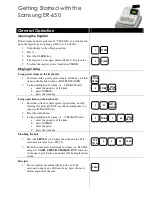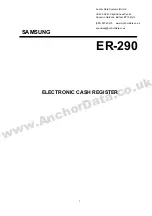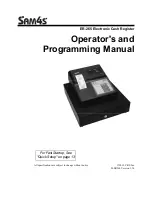
3
WIRING
The rear terminal contains 12 screw terminals for connecting #14 to #28 gauge wire.
The unit is controlled by a microprocessor and, therefore, an electrically "noisy" environment could cause operating
problems. The input power line should not be common to power lines for motors, pumps, contactors, etc.
The unit is designed to be immune from line or RF voltage interference. In some environments voltage spikes of over 100
volts, even 1000 volts, can occur. When common to a power line driving motors voltage fluctuations can be extreme and
rapid. Lines driving DC or AC solenoids, relays, or actuators can also cause problems.
Four sources of noise can occur:
1) AC power line noise - If the unit cannot be connected to a clean power source, an inductive load suppressing device
(MOV as GE # V130LA1 or Resistor Capacitor as Paktron # .2 uf/220 ohm @ 400V) can be installed. Although locating
the suppressor across the AC supply at the unit should help, best results are obtained by connecting the suppressor
across the leads of the "load" at the device causing the spike.
2) Input line noise -The noise is carried on the input and D.C. ground lines. Make sure the input wires are never run into
the unit in a bundle with power input lines. Also, keep these input lines isolated from inductive lines from devices
drawing heavy loads. If there is a possibility of electrical noise, we recommend using shielded cable, with the shield
being hooked to the D.C. ground terminal on the instrument, and to "earth" at one point in the circuit, preferably at the
D.C. ground terminal of the unit.
3) Output lines - The unit has two relay outputs. When these outputs are used to run external relays or solenoids, spikes
can be generated upon activation. This noise can spread through the instrument causing operating problems. If the
source is a D.C. operated device, a general purpose diode (IN4004) placed across the solenoid prevents electrical
noise spikes. Connect the cathode (banded side) to the more positive side of the coil. If the source is an A.C. operated
device, use a MOV or Resistor Capacitor across the coil.
4) 12 VDC output supply - Noise can be generated on the 12 VDC output supply if it is used to drive inductive loads or if
the current draw exceeds 50 mA. Insure that all inductive loads have a diode (such as IN4004) across the coil and that
the current does not exceed 50 mA.
UP/DOWN CONTROL AND QUADRATURE INPUTS
QUADRATURE INPUT:
When programming the counter section for quadrature input, you must set the unit for A net B and A sub B (see step 2 in
programming section). This insures proper operation. The rate can only be viewed in one direction. If the unit is a
ratemeter only (DPF78), connect only one of the quadrature channels to Input A (pin 5).
UP/DOWN CONTROL:
When using the up/down control option, Input A (pin 5) is the count input and Input B (pin 6) is the up/down control
(direction) input. The counter must be set for A net B and A sub B (see step 2 in programming section).
When the direction input is high (4-30VDC) the count inputs will count up, when the direction input is low (open or less than
1VDC) the count inputs will count down. The direction input must precede the count input by 1 msec when the unit is set for
low CPS and 1 usec when set for high CPS.









































